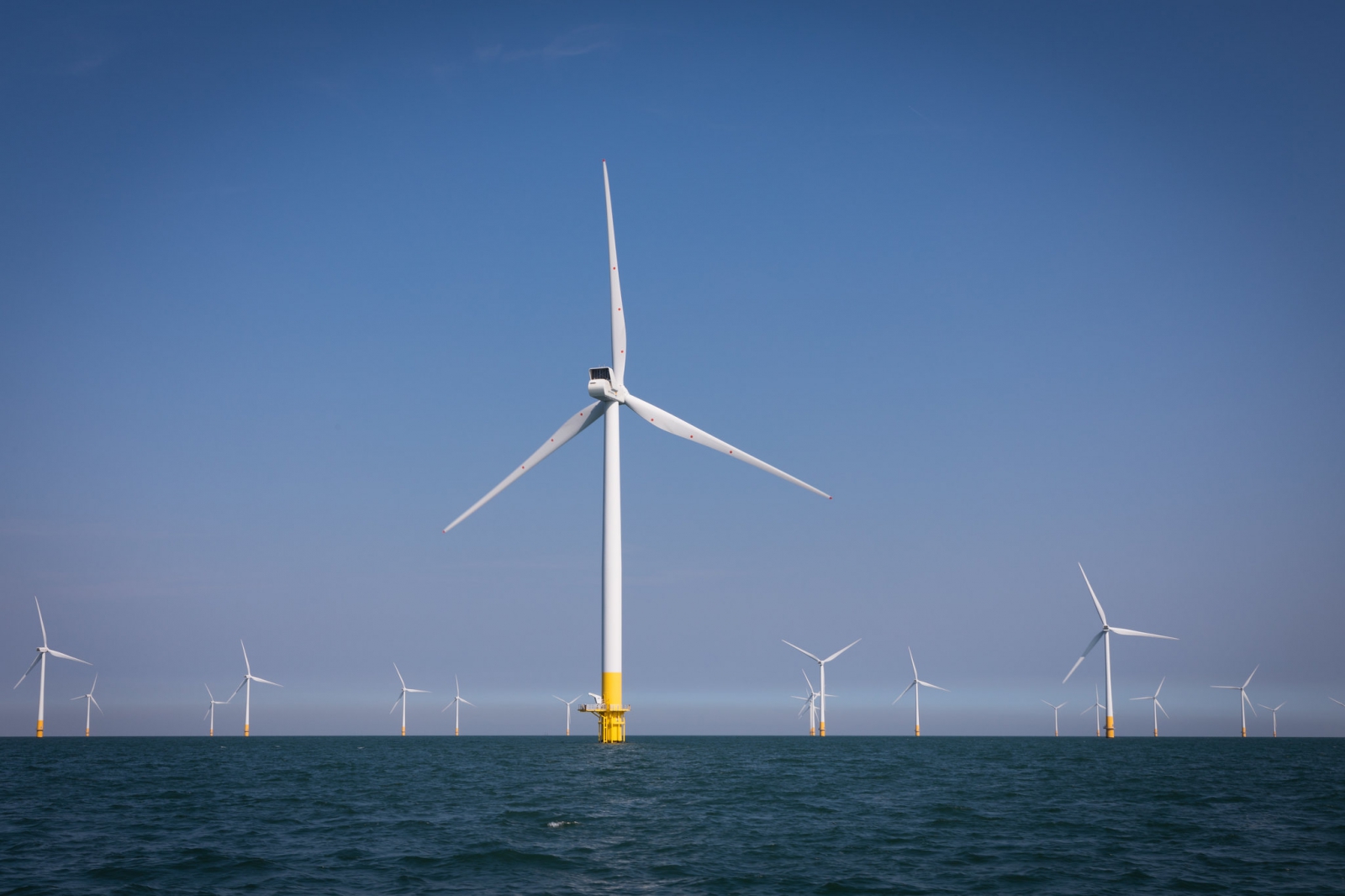
(Photo: Flickr/Nicholas Babaian)
The Ministry of Economic Affairs in Taiwan had initially planned to release a draft for its floating offshore wind farm demonstration program by year's end. However, the timeline may face further delays as discussions over incentive mechanisms continue internally. In contrast, neighboring countries like Japan and South Korea are progressing rapidly in floating wind development. Domestic developers urge the government to include floating wind projects in the 2025 Renewable Energy Feed-in Tariff (FiT) review to drive Taiwan's floating offshore wind sector forward.
Regional progress surges Taiwan developers seek policy action
Taiwan was an early adopter of offshore wind but has lagged behind countries such as the United Kingdom, France, Japan, and South Korea in floating wind advancement. The UK currently operates two floating wind farms, aiming to reach 5GW of capacity by 2030, while France's Pennavel wind farm is set to become the world's first commercial floating wind farm, expected to be operational by 2031.
While Europe leads the way in floating wind technology, Asian countries are also accelerating their efforts. Japan announced a FiT of 36 yen per kWh (approximately NT$10) in 2018, and in October last year, the Japanese government designated four candidate regions for demonstration projects. South Korea similarly launched a tender in October, with its FiT reportedly set at NT$10 per kWh.
In Taiwan, a gap remains between the government and developers' expectations for a floating wind FiT, creating a challenge for advancing demonstration projects. Todd Hsu, Regulatory Affairs Manager at IX Renewables, noted that FiTs are crucial for assessing project viability and influencing global energy technology development.
According to Peggy Liao, Senior Public Affairs Manager at BlueFloat Energy, the success of Taiwan's fixed-bottom offshore wind demonstration projects benefited from supportive FiTs and subsidies, enabling Taiwan to become one of the few countries with over 2GW of installed offshore capacity. With multiple floating wind farms operational worldwide and benchmark FiTs available, the current focus is on seizing the critical window of opportunity to establish floating wind in Taiwan.
The current demonstration program for floating wind farms in Taiwan lacks localization requirements and is being designed to include both a "Feed-in Tariff" and additional "subsidies." Industry players argue that the FiT should signal the government's commitment to the sector and, when considered alongside subsidies, provide developers a stable financial model. Liao hopes that the 2025 Renewable Energy FiT meeting will address floating wind rates and that subsidy policies for demonstration projects will be announced during subcommittee and review meetings.
Developers stress that a floating wind FiT will not only determine whether demonstration projects offer sufficient policy incentives but also serve as a key reference for investing in new technologies and testing equipment. Hsu emphasizes that the FiT should be determined through a structured review process involving various technical and cost parameters, rather than merely negotiating a price, as the cost structures for floating and fixed-bottom offshore wind differ significantly.
.jpg)
(Photo: pixabay)
Floating offshore wind to spur new supply chains in Taiwan
Floating wind projects are expected to create new supply chain opportunities, particularly in composite plastics and fiber industries. Transitioning from fixed-bottom to floating offshore wind requires addressing differences in environmental, technological, and industrial aspects. Liao explains that floating wind farms, required in waters deeper than 50–60 meters, necessitate farshore turbines, specialized installation vessels, and key components like floating platforms, anchoring systems, and dynamic cables.
The floating technology involves unique requirements compared to fixed-bottom turbines, where subsea cables are buried under the seabed. Floating turbines, installed in deep-sea areas, require extensive marine surveys, studying factors such as ocean topography, hydrology, and seabed characteristics, including wave and current conditions. The dynamic cables must float in the water column, adapting to varying depths.
Shifting to floating technology demands enhanced maritime survey and investigation capabilities, as well as additional technical equipment. A modularized floating platform could align with Taiwan's composite plastic industry, while mooring systems may connect with the composite fiber industry.
BlueFloat Energy has already partnered with Taiwan's Metal Industries Research & Development Centre (MIRDC) to assess the capacity of local supply chains for mooring and anchoring systems. Liao believes that a stable FiT and demonstration project incentives would allow developers to evaluate Taiwan's supply chain capacity, helping set the stage for commercial-scale projects in the upcoming 3-3 development phase.
Last January, the Energy Administration updated its draft demonstration plan for floating offshore wind farms, proposing a "2+1" model with 2 demonstration sites, each supporting 6–12 floating platforms with an installed capacity of around 90–180MW, expected to be operational and grid-connected by 2030. Yet, the detailed program framework remains unpublished.
Both floating wind developers agree that if Taiwan's floating wind FiT can be approved in 2025 and subsidy policies for the demonstration plan are released concurrently, they can target completion by 2030, contributing to Taiwan's goal of achieving a 30% renewable energy mix.
- The full article was translated by EnergyOMNI.